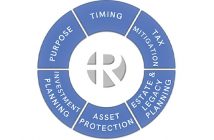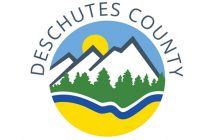(Photo above | Pixabay)
Cash is the lifeline of a small business and all companies, regardless of size, need it. Most companies start with very little of it and hope that eventually the cash coming in will be more than the cash going out. However, few small businesses take the time or have the expertise to prepare an actual cash flow statement.
One of the most common challenges for many small business owners is keeping their cash flow level. In fact, according to a U.S. Bank study, 82 percent of business failures can be attributed to poor cash flow management. When a customer doesn’t pay on time or your sales projections end up being lower than anticipated, that can put a major pinch on your ability to cover day to day expenses.
Eyal Shinar, founder and CEO of Fundbox says, “This is not an uncommon story for small business owners but I didn’t realize the scale to which this is happening until my team at Fundbox analyzed more than 39 million invoices on our platform from the tens of thousands of small business customers we serve. We estimated the total amount in unpaid invoices across all U.S. small businesses is approximately $825 billion, equivalent to about five percent of the U.S. GDP. On average, each small business has $84,000 in unpaid invoices.”
Cash flow can be defined as the net change in your company’s cash position from one period to the next. If you take in more cash than you send out, you have a positive cash flow. You have a negative cash flow if you have more cash outflow than inflow. Cash flow is a key indicator of financial health.
An actual cash flow statement, also known as statement of cash flows, is a financial statement based on the Income statement and the balance sheet that shows how changes in balance sheet accounts and income affect cash and cash equivalents, and breaks the analysis down to operating, investing and financing activities.
There is a common expression in business that says, “Cash is King.” The reason this statement is true is that having cash puts your business in a more stable position. While you might have certain borrowing ability, cash affords you greater protection against loan defaults or foreclosures. Cash flow is distinct from cash position. Having cash on hand is critical, but cash flow indicates an ongoing ability to generate and use cash. Here are three reasons why “cash is king.”
Servicing Debt
Borrowing money is one way for your business to buy buildings, equipment and inventory but in doing so, you are spending money today that you will hopefully receive in the future to make your purchases. This implies that you need positive future cash flow to pay for your debt commitments. Companies commonly have long-term loans and short-term credit accounts with vendors. Each loan requires monthly payments. The obligation to make these payments on an ongoing basis restricts your free cash flow, which is money available to invest in growing your business.
Fueling Growth
Strong cash flow provides the capabilities to take advantage of opportunities such as building new locations, investing in research and development, renovating infrastructure, improving technology, providing more training and purchasing more assets and inventory. Strong cash flow helps your company operate in a strategic, proactive way, rather than a reactive, defensive way.
Opening New Doors
Strong cash flow makes your business more appealing to a lender if, for example, you have an opportunity to strategically acquire a competitor or diversify into another business field . You also have the ability to offer favorable credit terms to attract new buyers if you are less desperate for cash.
Businesses of all sizes experienced the difficulty of the recent recession and many of them did not survive. In fact, according to U.S. Census Bureau data, more than 170,000 small businesses in the U.S. closed between 2008 and 2010.
There were 6.79 million small businesses in the U.S. in 2010, down from 6.96 million in 2008, according to the census. It is difficult to say how many closed due to cash flow shortages but business owners who survived probably relied on one or more of the following management strategies:
1. Push back payments
When a cash flow crunch strikes, one of the first defensive measures to consider is delaying some of your payments if you can. While you can’t put off paying your utility bills or rent payments, you may be able to negotiate an extension of the due date with some of your other vendors and suppliers. If you have a history of paying on time previously, they may be willing to cut you a break and let you hold off on paying for a few extra days or weeks until you have the cash.
2. Negotiate new payment terms going forward
If your vendors are open to allowing you to delay payments in the short-term, consider using that as an opening to renegotiate your existing payment structure for the long-term. For example, if you normally pay on a net-30 basis but you find yourself running into the same cash flow problems each month, extending payment out to 45 days instead may give you some much-needed wiggle room.
3. Put any non-essential spending on pause
Speaking of your budget, you should be taking a closer look at what you’re spending when you find yourself in a tight spot. Specifically, you want to examine your expenses to see if there’s anything you can put on hold or cut out altogether. For instance, if sales are down, reducing your weekly or monthly inventory order could be an option. Dropping recurring subscription services may be another. The more you trim, the more money you’re putting back into your cash flow.
4. Consider offering customers a discount to pay up
Finding yourself short on cash can be frustrating, especially when you have outstanding receivables that you’re waiting on. Sending out friendly reminders to late-paying customers may facilitate some cash coming your way, but if you’re really pressed for time, offering a discount could motivate them to pay faster. Just remember to weigh the cost of the discount against the benefits of having cash in hand sooner rather than later.
5. See if you can snag a discount of your own
Giving a discount is one way to speed up cash flow but getting a discount can be just as valuable. Ask your vendors if there’s any possibility of receiving a discount on the services or supplies you’re purchasing. Even if it’s just 5%, that could make a significant difference in how much cash you’re having to part with each month. It can also help to balance out any discounts you may be extending to your customers.
6. Reexamine your pricing structure
Raising prices is a necessary part of doing business, and it’s something to think about when you’re in a cash flow jam. You don’t, however, want to raise prices arbitrarily. Look at how much you’re spending on supplies and inventory and compare that to what you’re charging. Has it been awhile since you increased prices? How do your prices measure up against what your competitors are charging? Raising prices can help to bring you out of a cash flow slump, however, you have to do it strategically. Otherwise, you could end up driving off customers.
7. Tap into small business financing
When you’re in a dry spell and you need working capital, getting a small business loan, credit card or line of credit may be a solution. A small business credit card, for example, could be useful for covering your bills and everyday business spending. A line of credit or term loan, on the other hand, may be more appropriate if you need working capital to cover payroll.
If small business financing is something you’re interested in, it pays to compare what’s out there carefully before you commit. Some types of financing may be a better fit than others, based on how much you can borrow, the interest rate and fees you’ll pay, and what you need to qualify. Most importantly, consider how repaying a loan or line of credit will affect your future cash flow. Financing could help in a pinch, but it could hurt you in the long run if you’re having to dedicate a sizable amount of your revenue to repaying what you’ve borrowed.
Now is a good time for cash flow planning
If you are currently in a cash flow crunch or have experienced one in the past, then now is a good time to start a cash flow analysis. You can search for the form and directions on the internet or go to SCORE.com and use their “12 Month Cash Flow Statement.” You can also ask you CPA, tax advisor or bookkeeper for help. Doing so will help set up a business environment where “Cash is King.”
Bruce Barrett is a Certified SCORE Mentor with SCORE Central Oregon and a broker with Windermere Commercial Real Estate. Contact Bruce at barrett@Windermere.com





